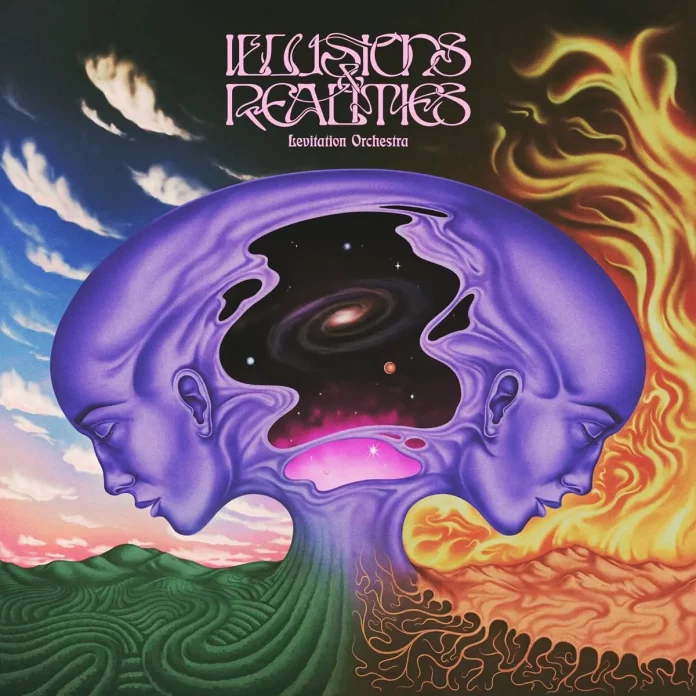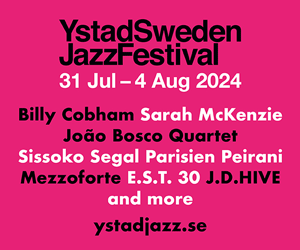According to the liner notes these compositions were constructed from a series of discussions the group had which they later transformed into musical segments. The titles below indicate the subject matter. The unsigned liner notes state that had the orchestra members spent another moment on the music “it would have taken a different form”. This suggests that only written sketches were made, and the music was completely improvised. The music itself tends to confirm this.
This is a contemporary jazz orchestra with flourishes of folk music and rap-style vocals. It is atmospheric and often hypnotic in effect, producing sounds that are like the avant-garde jazz of the 1960s and 70s but very well organised for a true collective sound.
The opening track, Life Is Suffering, has gentle harp melodies to begin, joined after a short time by Plana on flute. There is a burst from the full orchestra which subsides to Maria Osuchowska’s harp, her lines graceful, more fragile and strangely percussive. Vocalist Dilarious produces a rap-type vocal, and the piece ends with gentle flute and harp melodies. Listen To Her brings in the full orchestra again with solos from the strings. It ends with a plaintive trumpet solo played by Isidstrom which builds slowly in intensity.
Spiral is rhythm driven, beginning with Nockles-Moore’s bass solo, dark and brooding. There is more from the full orchestra including tenor solos from both players. An air of bleak melancholy certainly hangs over the lone flute solos from Plana’s flute although overall this music is rhythmically hypnotic.
LP2 begins with softly pulsing acoustic guitar, very low key. Over the four selections labelled as Child Part 1, 2, 3 and 4, there are contributions from flute and strings with occasional short passages by the full orchestra. The vocalists are heard mainly chanting or speaking against the esoteric sounds coming from the orchestra. Guitar and harp are well featured here.
The final two tracks are more abstract than the music heard earlier, with several out-of-tempo guitar, flute and tenor sax solos. After some jerky passages we hear the orchestra in full flow with the strings to the fore and Emma Barnaby’s cello prominent. The final tenor sax solo begins slowly – softly, even – but gradually builds in intensity. There are two featured tenor soloists present but no indication of which player is taking a solo at any given time. The record ends with a burst from the entire orchestra and then fades out gently at the conclusion.
This music is pastoral in mood and phrasing with shades of jazz, gospel, blues, folk and free blowing. If you’ve never heard a call and response workout between tenor sax and harp, this is your opportunity. Different, original, and worth investigating if you are open to new, experimental music with many links to the tradition.
Discography
LP1: Life Is Suffering / Send And Receive Love Only; Listen To Her (31.01)
LP2: Child Part 1: Child Part 2: Child Part 3; Child Part 4; Between Shadows; Many In Body, One In Mind (34.57)
Alex Kaner Isidstrom (t); Maria Osuchowska (h); James Akers, Deji Tjishakin (ts); Isluis Domenech Plana (f); Saskia Horton, Beatriz Rola (vn); Emma Barnaby (clo); Plumm, Dilarious (v); Paris Charles (g); Hamish Nockles-Moore (b); Harry Ising (d). Soup Studio, location unknown, no dates listed.
Gearbox, number unknown















